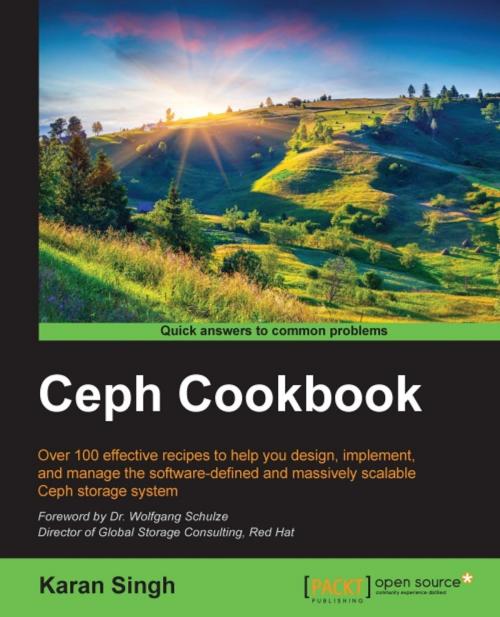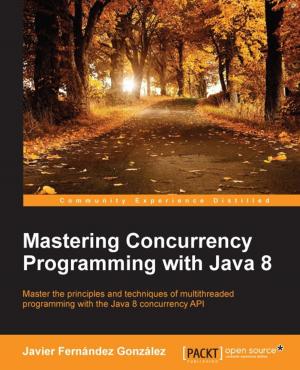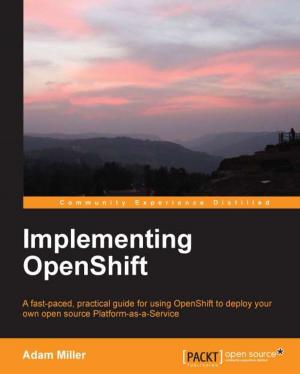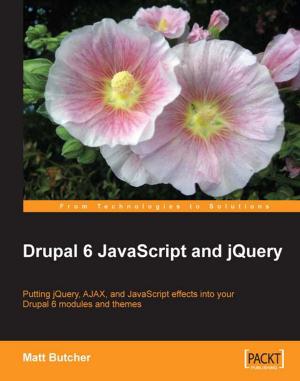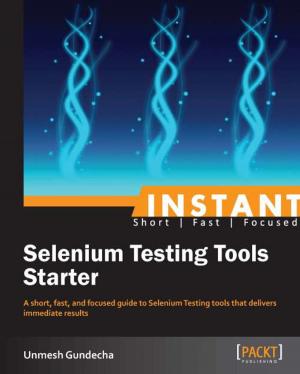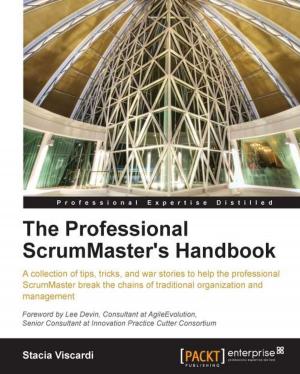Ceph Cookbook
Nonfiction, Computers, Advanced Computing, Parallel Processing, Database Management, Information Storage & Retrievel| Author: | Karan Singh | ISBN: | 9781784397364 |
| Publisher: | Packt Publishing | Publication: | February 29, 2016 |
| Imprint: | Packt Publishing | Language: | English |
| Author: | Karan Singh |
| ISBN: | 9781784397364 |
| Publisher: | Packt Publishing |
| Publication: | February 29, 2016 |
| Imprint: | Packt Publishing |
| Language: | English |
Over 100 effective recipes to help you design, implement, and manage the software-defined and massively scalable Ceph storage system
About This Book
- Implement a Ceph cluster successfully and gain deep insights into its best practices
- Harness the abilities of experienced storage administrators and architects, and run your own software-defined storage system
- This comprehensive, step-by-step guide will show you how to build and manage Ceph storage in production environment
Who This Book Is For
This book is aimed at storage and cloud system engineers, system administrators, and technical architects who are interested in building software-defined storage solutions to power their cloud and virtual infrastructure. If you have basic knowledge of GNU/Linux and storage systems, with no experience of software defined storage solutions and Ceph, but eager to learn this book is for you.
What You Will Learn
- Understand, install, configure, and manage the Ceph storage system
- Get to grips with performance tuning and benchmarking, and gain practical tips to run Ceph in production
- Integrate Ceph with OpenStack Cinder, Glance, and nova components
- Deep dive into Ceph object storage, including s3, swift, and keystone integration
- Build a Dropbox-like file sync and share service and Ceph federated gateway setup
- Gain hands-on experience with Calamari and VSM for cluster monitoring
- Familiarize yourself with Ceph operations such as maintenance, monitoring, and troubleshooting
- Understand advanced topics including erasure coding, CRUSH map, cache pool, and system maintenance
In Detail
Ceph is a unified, distributed storage system designed for excellent performance, reliability, and scalability. This cutting-edge technology has been transforming the storage industry, and is evolving rapidly as a leader in software-defined storage space, extending full support to cloud platforms such as Openstack and Cloudstack, including virtualization platforms. It is the most popular storage backend for Openstack, public, and private clouds, so is the first choice for a storage solution. Ceph is backed by RedHat and is developed by a thriving open source community of individual developers as well as several companies across the globe.
This book takes you from a basic knowledge of Ceph to an expert understanding of the most advanced features, walking you through building up a production-grade Ceph storage cluster and helping you develop all the skills you need to plan, deploy, and effectively manage your Ceph cluster. Beginning with the basics, you'll create a Ceph cluster, followed by block, object, and file storage provisioning. Next, you'll get a step-by-step tutorial on integrating it with OpenStack and building a Dropbox-like object storage solution. We'll also take a look at federated architecture and CephFS, and you'll dive into Calamari and VSM for monitoring the Ceph environment. You'll develop expert knowledge on troubleshooting and benchmarking your Ceph storage cluster. Finally, you'll get to grips with the best practices to operate Ceph in a production environment.
Style and approach
This step-by-step guide is filled with practical tutorials, making complex scenarios easy to understand.
Over 100 effective recipes to help you design, implement, and manage the software-defined and massively scalable Ceph storage system
About This Book
- Implement a Ceph cluster successfully and gain deep insights into its best practices
- Harness the abilities of experienced storage administrators and architects, and run your own software-defined storage system
- This comprehensive, step-by-step guide will show you how to build and manage Ceph storage in production environment
Who This Book Is For
This book is aimed at storage and cloud system engineers, system administrators, and technical architects who are interested in building software-defined storage solutions to power their cloud and virtual infrastructure. If you have basic knowledge of GNU/Linux and storage systems, with no experience of software defined storage solutions and Ceph, but eager to learn this book is for you.
What You Will Learn
- Understand, install, configure, and manage the Ceph storage system
- Get to grips with performance tuning and benchmarking, and gain practical tips to run Ceph in production
- Integrate Ceph with OpenStack Cinder, Glance, and nova components
- Deep dive into Ceph object storage, including s3, swift, and keystone integration
- Build a Dropbox-like file sync and share service and Ceph federated gateway setup
- Gain hands-on experience with Calamari and VSM for cluster monitoring
- Familiarize yourself with Ceph operations such as maintenance, monitoring, and troubleshooting
- Understand advanced topics including erasure coding, CRUSH map, cache pool, and system maintenance
In Detail
Ceph is a unified, distributed storage system designed for excellent performance, reliability, and scalability. This cutting-edge technology has been transforming the storage industry, and is evolving rapidly as a leader in software-defined storage space, extending full support to cloud platforms such as Openstack and Cloudstack, including virtualization platforms. It is the most popular storage backend for Openstack, public, and private clouds, so is the first choice for a storage solution. Ceph is backed by RedHat and is developed by a thriving open source community of individual developers as well as several companies across the globe.
This book takes you from a basic knowledge of Ceph to an expert understanding of the most advanced features, walking you through building up a production-grade Ceph storage cluster and helping you develop all the skills you need to plan, deploy, and effectively manage your Ceph cluster. Beginning with the basics, you'll create a Ceph cluster, followed by block, object, and file storage provisioning. Next, you'll get a step-by-step tutorial on integrating it with OpenStack and building a Dropbox-like object storage solution. We'll also take a look at federated architecture and CephFS, and you'll dive into Calamari and VSM for monitoring the Ceph environment. You'll develop expert knowledge on troubleshooting and benchmarking your Ceph storage cluster. Finally, you'll get to grips with the best practices to operate Ceph in a production environment.
Style and approach
This step-by-step guide is filled with practical tutorials, making complex scenarios easy to understand.
